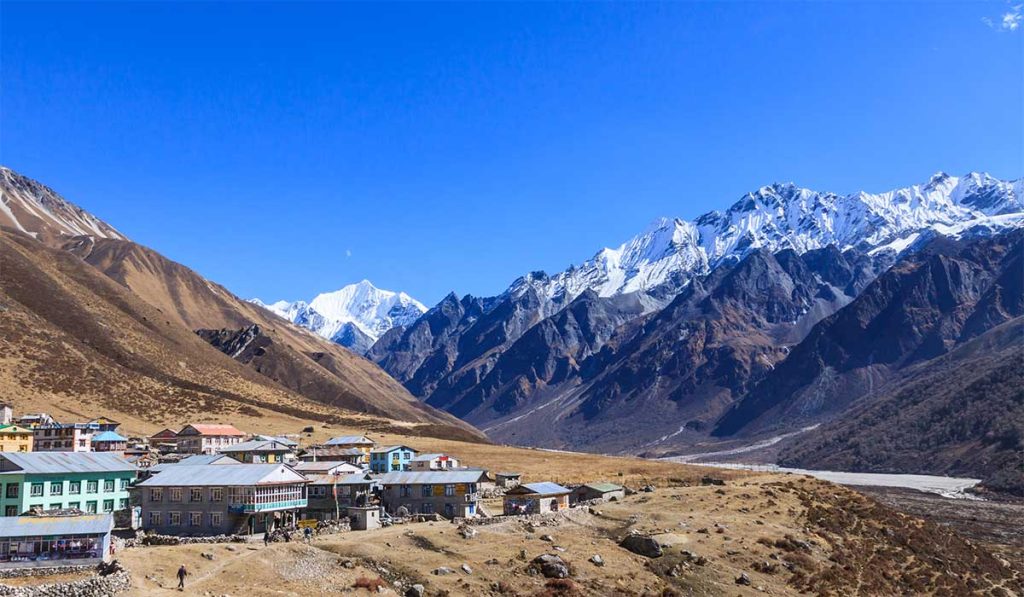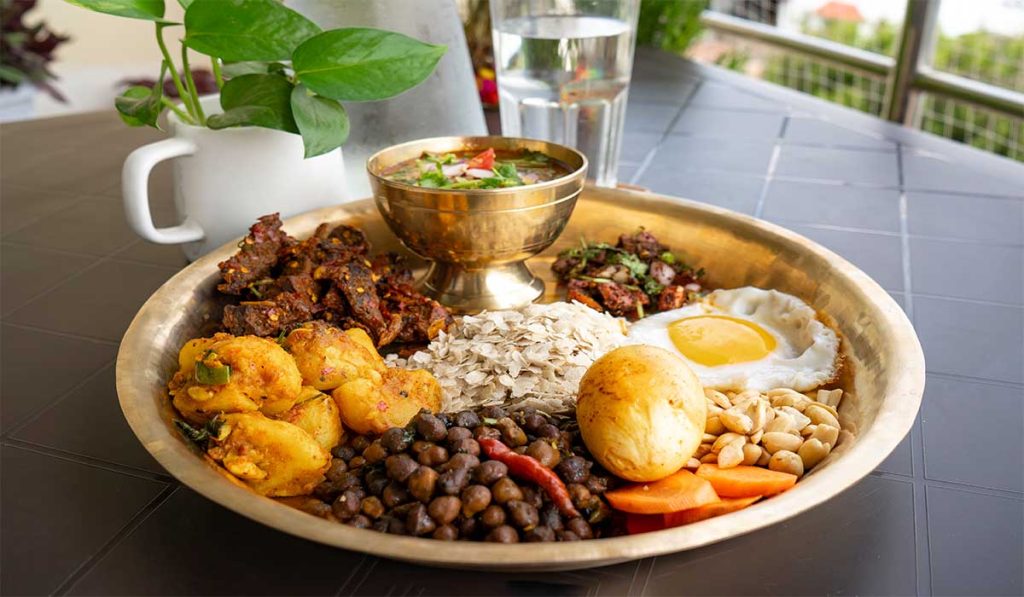The Langtang Village, nestled in the Langtang Valley at an altitude of 3,430 meters, offers stunning views of snowcapped peaks. The high Himalayan peaks such as Mount Langtang Lirung, Ganesh Himal and Dorje Lakpa dominate the skyline with spectacular beauty.. The snowfall adds more beauty to the Himalayas when the temperature is extremely low.
The weather and temperature of Langtang Village play a crucial role in shaping the entire trekking experience. Any bad weather day at Langtang Village may significantly impact the trekkers’ journey. So, you should carefully choose the suitable season for the Langtang Valley Trek.
Langtang Village lies at a higher altitude in the Langtang Valley, which makes the weather unstable and unpredictable. The weather and temperature change with the seasons, altering the trekking conditions. Unlike the lower sections of the Langtang Trek, the weather is very cold at Langtang Village.

During your Langtang Trek, you will likely spend a night in Langtang Village, staying overnight. Understanding the weather and climate of the Langtang Village is crucial. The weather and climate shape everything from landscapes to the lifestyle of people in the Langtang Village. You can get amazing Himalayan vistas from the serene environment of the Langtang Village.
Highlights
- Trekkers may encounter unique wildlife like Red Pandas, Himalayan Tahr, monkeys, and Himalayan birds.
- The area is rich in alpine flora, especially rhododendrons, along with pines, firs, and bamboo.
- You get to experience the striking views of mountains like Mount Langtang Lirung.
- The Langtang River flows near the Langtang Village through the Langtang Valley, where visitors can enjoy the soothing sound and the fresh, cold air.
Geography and Climate of Langtang Village
The Langtang Village is located within the beautiful Langtang National Park, in Rasuwa, the heart of the Langtang Valley. The area features a unique geography with diverse landscapes in the Langtang Village.
The geography of the Langtang Village consists of steep trails, rocky terrain, and lush forests. Trekkers also cross roaring rivers and cascading waterfalls during the Langtang Valley Trek.
Moreover, you can enjoy the views of various glaciers like the Langtang Lirung Glacier (4,000 to 4,200 meters), icefalls, and hanging small glaciers. The Langtang River, flowing from the Langtang Glacier, provides fresh mountain air and scenic beauty.
Furthermore, the climate in Langtang Village can shift rapidly due to its high altitude (around 3,400 meters). Heavy rainfall and snowfall can cause landslides that block trails, while strong winds may affect the surrounding forests.
Seasonal Weather in the Langtang Village
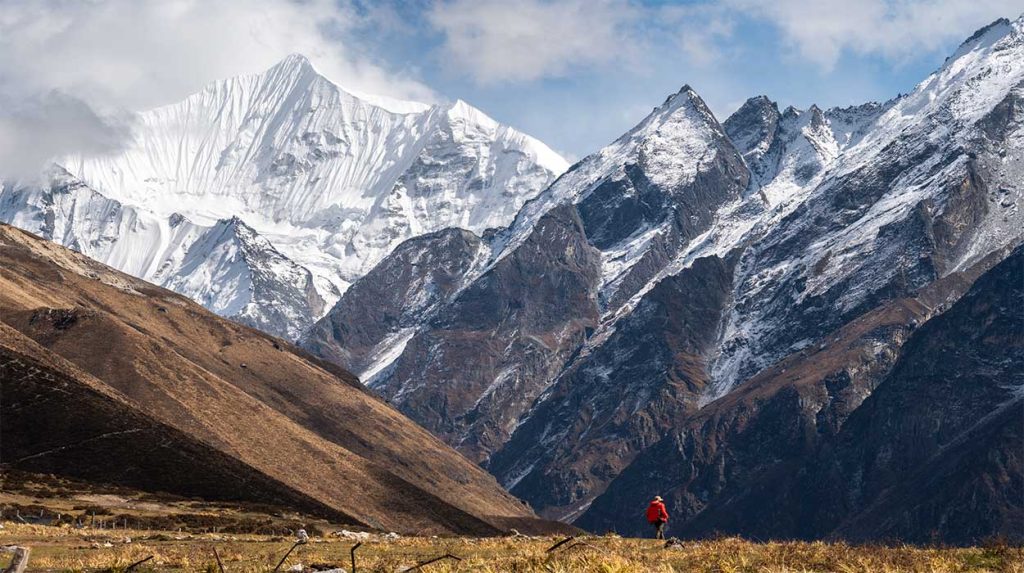
The weather differs in every season. Also, every season is not suitable for trekking. The weather conditions in every season are below:
Monsoon Season (June to August)
The monsoon season is not ideal for trekking in the Langtang Valley. It brings heavy rain, and occasionally, snowfall occurs at higher altitudes.
Due to the altitude, the weather is unpredictable, which may cause landslides and even avalanches. The forests look green and lush, but clouds and rain often block views of the peaks. Thus, monsoon is considered an off-season for Langtang treks
Winter Season (December to February)
The winter season is also off-season for trekking in the Langtang Region. It brings extremely cold weather, low temperatures and heavy snowfall. Trekkers may even face frostbite and navigation difficulties, which can hinder your journey.
Sudden weather changes at high altitude further increase the risks.
Autumn Season (September to November)
Autumn is considered the best season after spring to make your journey memorable. The sky becomes crisp and clear, offering breathtaking views of snowy peaks. The colorful flowers and greenery around Langtang Village make the trek especially beautiful.
Spring Season (March to May)
Spring is regarded as the best season for the Langtang Valley Trek, providing ideal conditions. In Langtang Village, you can see the vibrant flowers and lush forests, especially rhododendrons.
The sky remains stable and clear most of the time, making your stay in Langtang village joyful and your trek unforgettable.
Temperature Ranges And Variations

The temperature in Langtang Village can change rapidly due to its altitude. Days are often mild and pleasant under the sun, while nights turn cold
The following table summarizes average daytime and nighttime temperatures in every season:
Average Seasonal Temperatures
| Seasons | Temperature |
| Monsoon (June to August) | Daytime: 12°C to 18°C Nighttime: 5°C to 10°C |
| Winter (December to February) | Daytime: 0°C to 5°C Nighttime: –8°C to –15°C (sometimes lower during cold waves) |
| Autumn (September to November) | Daytime: 10°C to 12°CNighttime: –2°C to –6°C |
| Spring (March to May) | Daytime: 10°C to 15°CNighttime: 0°C to –5°C |
How Altitude Shapes The Weather
The Langtang Village, situated at over 3,400 meters, experiences high-altitude conditions. Thin air leads to colder temperatures and unpredictable weather. Sudden shifts from warmth to cold, or from sunshine to rain / snow are common.
Thus, altitude strongly influences the village’s weather.
Weather Challenges in Langtang Village
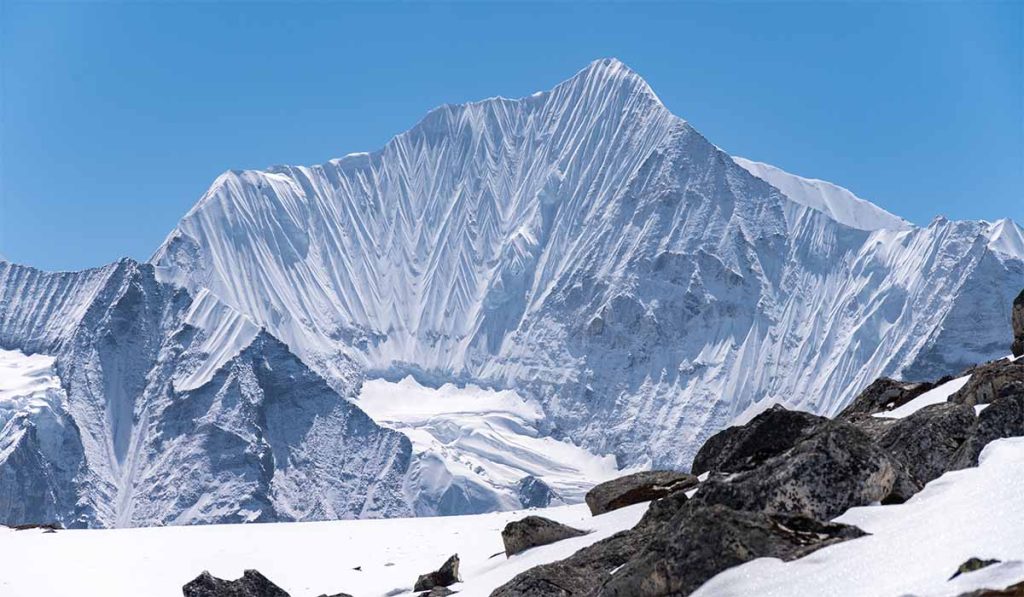
The atmosphere in the Langtang Village is highly unpredictable. The people living here face several risks due to weather, such as:
Unpredictable Mountain Weather
The weather is unpredictable in the Langtang Village due to its high altitude. The temperature changes suddenly, causing heavy rainfall, snowstorms, snowfall or dense fog.
Monsoon Problems
During the monsoon, landslides, muddy trails and swollen rivers may occur, disturbing both trekkers and locals. It could also potentially increase the leeches, which may cause health issues. Humidity and rain can make clothing wet quickly, making trekking more difficult.
Winter Risks
In the winter season, the people in the Langtang Village may face heavy snowfall and even snow avalanches. Trails can be blocked by snow, and the icy paths may be slippery. These risks are big issues during the winter season.
Health Issues
During the winter season, the temperature falls very low, and the thin air at high altitude increases physiological strain. So, people in the Langtang Village and trekkers suffer from various health issues and are at risk of altitude sickness, AMS, and cardiac complications.
Clothing and Gear For Every Season

You should carry clothing suitable for high-altitude conditions. Dressing similarly to locals can help adapt quickly. During the trek to Langtang Valley, pack your clothing and gear according to the season.
Most importantly, follow the golden rule of layering while choosing outfits. You must adapt to the temperature variations. Here is what to wear for each season:
Monsoon Season
During the monsoon season, the weather is warm, humid, and rainy. So, trekking is not generally recommended. If you decide to opt for the trek, the following clothing is advised:
Base Layer: Quick-dry shorts, long-sleeve shirts
Mid-Layer: Lightweight fleece
Outer Layer: Fully waterproof shell jacket and pants
Bottoms: Moisture- and sweat-wicking trekking pants and waterproof boots
Accessories: UV sunhats, sunglasses, and light gloves
Essential gear: Rain covers, trekking poles, insect repellent and dry bags for electronics and clothes.
Winter Season
Winter trekking is not recommended, but if undertaken, the following clothing rules should be followed:
Base Layer: Thermal top and bottom
Mid Layer: Heavy fleece or insulated jackets
Outer Layer: Thick down jacket and waterproof shells
Bottoms: Thermal leggings and insulated trekking pants
Accessories: Woolen hats, heavy gloves, scarves, and warm socks
Essential gear: Microspikes, crampons, trekking poles, hot water bottles, lip balm, moisturizers and sleeping bags
Spring Season
Spring is an ideal time for trekking and enjoying the snowcapped peaks’ beauty. Here is what you should pack to trek in this season:
Base layer: Moisture and sweat-wicking T-shirts and thermals
Mid-layer: Fleece or light down jackets
Outer layer: Windproof and waterproof jackets
Bottoms: Trekking pants and thermal leggings for night
Accessories: Sunhats, sunglasses, light gloves, scarf
Essential gear: Sleeping bags, camera, trekking poles
Autumn Season
Autumn is one of the best times for trekking in Langtang region as the weather is stable and the skies are mostly clear with fewer clouds. Follow layering rules:
Base layer: Breathable trekking shirts and thermals
Mid-layer: Fleece jackets
Outer layer: Down jackets
Bottoms: Trekking pants and thermal bottoms
Accessories: Warm hat, gloves, sunglasses, buff
Essential gear: Sleeping bags, headlamps, cameras and trekking poles.
Tips for Dealing with Weather Challenges
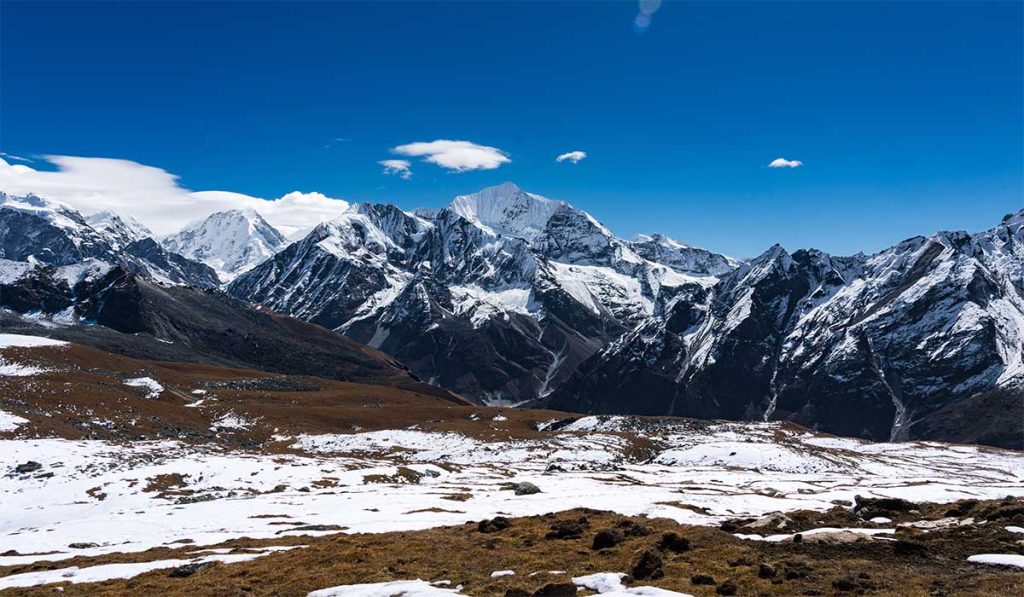
Layered clothing for temperature shifts
Proper clothing matters for your trip to Langtang Village. As it is located at a higher altitude, the temperature may not be stable and may shift rapidly. Dressing layers helps you adapt to changing conditions and ensures a comfortable trek.
Mental Preparation
Weather challenges may pose psychological stress. You should be mentally prepared and strong for the long trip to Langtang Village. Mental preparation, including yoga or other exercises, can help trekkers cope with stress during the trek.
Microspikes / Trekking Poles for Icy Winter Trails
The trails are steep, rocky, and slippery, especially in winter due to snow and ice. Using microspikes and trekking poles are recommended for safety.
Flexible itinerary to adjust for delays
Unforeseen delays can occur due to weather or trail conditions. A flexible itinerary allows adjustment without stress.
Conclusion
You can capture many unforgettable memories on your Langtang trek, even with its erratic weather and temperature. The sudden change from clear skies to cloudy and cold conditions adds excitement and adventure. These moments may be challenging, but with proper preparation and training, they are fully enjoyable.
Your physical and mental fitness, along with the outfit and gear, enhance your experience in all seasons. Physical and mental fitness, combined with appropriate clothing and gear, ensure you can fully appreciate the Himalayan beauty.
Autumn and spring offer freshness and vibrant landscapes, while winter and monsoon showcase lush greenery, snowfall, and breathtaking mountain views. You can create memories that last lifetime. These experiences contribute to a truly memorable trekking journey.
Ultimately, the weather and temperature in Langtang Village influence every trek, but the stunning Himalayan scenery and warm local hospitality make every challenge rewarding. Your Langtang journey always rewards you for the challenge, no matter the season.
